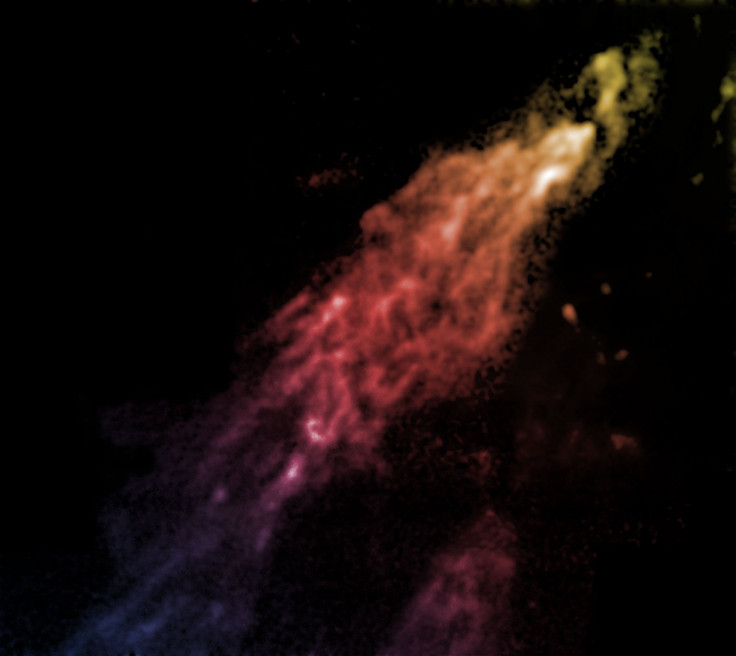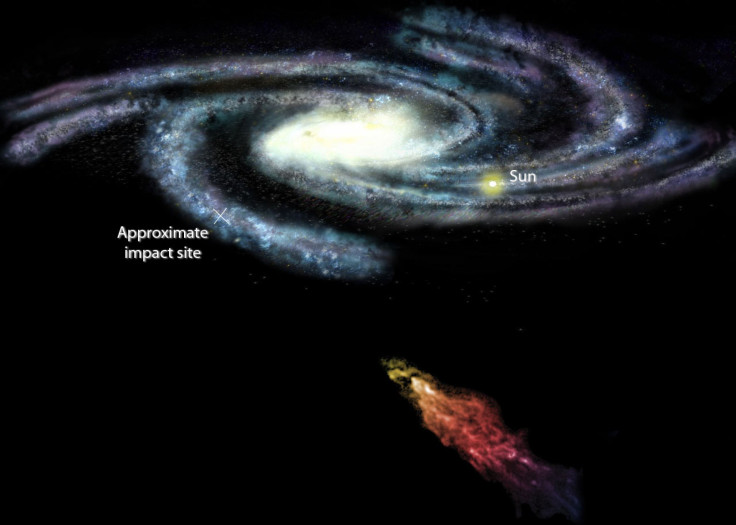Milky Way’s Fuel Source Revealed: Gas Clouds Held By A Magnetic Field Act As A ‘Food Pill’
The Milky Way continues to create new stars but astronomers are not quite sure how it gets the necessary fuel for such star forming activity. A new study strengthens the theory that our galaxy is fed by gas from interstellar space.
In order for new stars to form there needs to be fuel, in this case gas, but there is not readily available source for this activity in the Milky Way. As the researchers from the Commonwealth Scientific and Industrial Research Organization, CSIRO, note, it is believed our galaxy gets its fuel from gas clouds from interstellar space, the area of space outside of the sun’s influence. The problem with this theory is the possibility of the gas cloud would get burned up before it reached the galaxy’s starry disk and fueling any star formation activity.

Based on the research by Alex Hill, a CSIRO astronomer, and colleagues, gas clouds may have an incredibly weak magnetic field that could keep the cloud intact, enabling a resupply of star-forming fuel. Hill and his team studied the Smith Cloud, discovered by Gail Bieger –Smith in 1963, and the research was published in the Astrophysical Journal.
“The million-degree upper atmosphere of the Galaxy ought to destroy these hydrogen clouds before they ever reach the disk, where most stars are formed,” said Hill in a statement. Researchers used two radio telescopes, the National Science Foundation’s Karl G. Jansky Very Large Array, VLA, and the Robert C. Byrd Green Bank Telescope, GBT, to observe the Smith Cloud.
The Smith Cloud is a high-velocity cloud with a mass roughly one million times that of the sun. The cloud is made up of hydrogen gas and the researchers discovered a weak magnetic field, having the strength of just 0.002 percent of the Earth’s magnetic field. This magnetic field may be enough for the Smith Cloud to survive its trip to the Milky Way and the cloud is traveling incredibly fast, an estimated 150 miles per second, reports the National Radio Astronomy Observatory.

According to the NRAO, there are hundreds of high-velocity clouds at the edge of the Milky Way but researchers are unsure of their origins. Some astronomers believe these clouds are the remains of earlier galaxy formation or were ripped from a galaxy. The Smith Cloud will reach the Milky Way’s starry disk in 30 million years and the hydrogen gas is expected to trigger an incredible period of star formation activity.
© Copyright IBTimes 2024. All rights reserved.






















